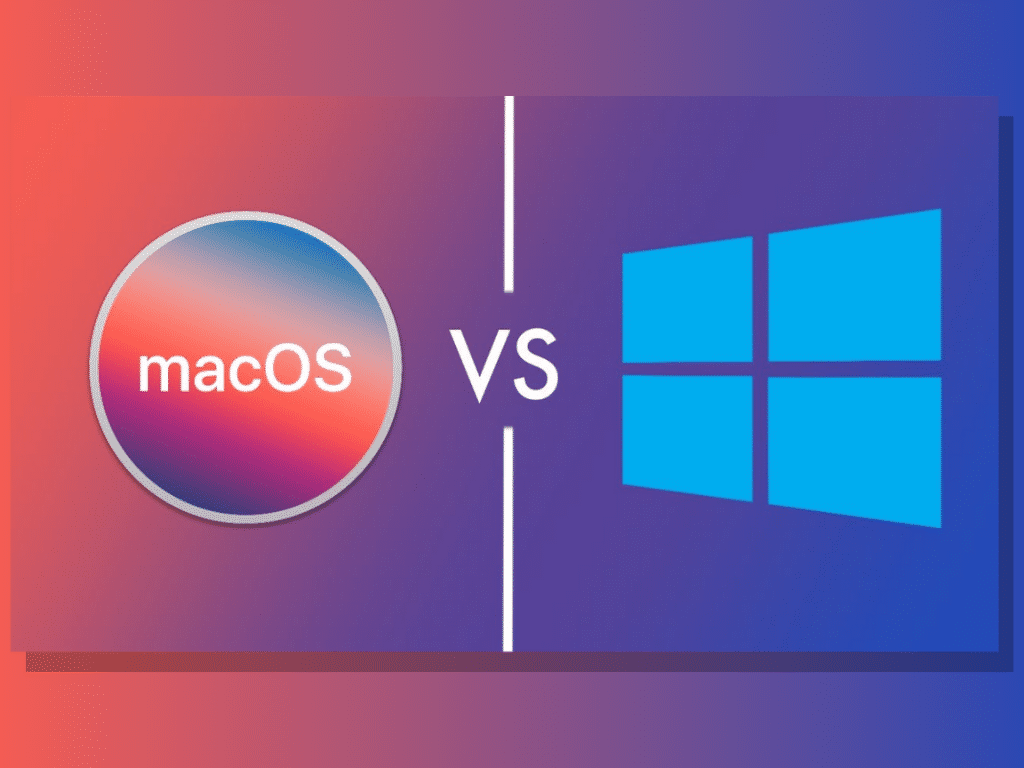In today’s rapidly evolving digital world, technology plays a vital role in the success of any business. Operating systems such as Windows and Mac have dominated the market for years, providing businesses with the tools they need to effectively manage their day-to-day operations. With both platforms offering a wide range of features and capabilities, businesses often wonder which one is best suited for their needs. It’s no longer just about productivity, but also about performance.
In this blog article, we will explore the key differences between Windows and Mac and evaluate which one is best suited for businesses in terms of performance. We will delve into the features offered by each operating system, hardware requirements, ease of use, security, and compatibility with third-party software. Additionally, we will examine the cost-effectiveness and value proposition of both operating systems, so businesses can make an informed decision on the best choice to make based on their needs.
To take your business to the next level, it’s essential to evaluate your company’s operating system.
1. Overview of Windows and Mac OS Operating Systems
Windows and Mac OS are two of the most widely used operating systems in the world. They are both designed to perform fundamental functions such as file management, running applications, and connecting to the internet. Windows OS, developed by Microsoft, is the most popular operating system in the world, with over 1.5 billion users. On the other hand, Mac OS, developed by Apple, has gained popularity in creative industries due to its ease of use, powerful built-in tools, and high-end design. This document, titled “From Productivity to Performance: Evaluating Windows and Mac for Business,” provides an overview of these two operating systems, highlighting their similarities, differences, unique features, and benefits for businesses. By understanding the strengths and weaknesses of each system, businesses can make an informed decision on which operating system to use, based on their needs and priorities.
2. Considerations regarding security and compliance
As companies increasingly rely on technology to conduct their operations, it is essential to prioritize security and compliance issues. In order to ensure the protection of sensitive information and maintain regulatory compliance, it is important to carefully assess the security features of any proposed technological solution. Since Windows and Mac operating systems are widely used in businesses, it is crucial to evaluate both platforms in terms of security and compliance. This includes features such as built-in antivirus protection, encryption, and secure boot. Additionally, companies must consider factors such as data privacy laws and industry regulations when choosing an operating system. By prioritizing security and compliance issues, companies can not only protect themselves against cyber threats, but also ensure the trust and loyalty of their customers.
3. User experience and usability
When it comes to choosing an operating system for a business, user experience and usability are key factors that can have a significant impact on productivity and performance. Both Windows and Mac operating systems have made considerable progress in improving user experience and usability over the years.
Windows has always prioritized user experience, striving to make tasks simple and straightforward for users. While the large number of customization options can result in a learning curve for new users, the user interface is generally intuitive and easy to use. Additionally, Windows has worked to streamline processes through features such as Cortana, which allows for voice commands and quick access to frequently used files and settings.
As for Mac, it is known for its clean and intuitive interface, which easily handles multitasking and file organization. The operating system emphasizes simplicity and ease of use, and is geared towards users who value aesthetics and design. Additionally, Mac’s integration with other Apple products, such as iCloud and AirDrop, allows users to seamlessly share files and collaborate.
Ultimately, the choice between Windows and Mac for professional use depends on the specific needs and preferences of the organization and its users. Both operating systems have come a long way in prioritizing user experience and usability, and each offers a unique set of features and advantages.
4. Cost and Lifespan
When it comes to choosing between Windows and Mac for your business needs, an important factor to consider is the cost and lifespan. While initial costs may vary, it is important to take into account the cost of the system’s lifespan. Windows devices tend to have a lower initial cost, but may require more maintenance and updates over their lifespan. Mac devices, on the other hand, tend to have a higher initial cost, but require less maintenance and updates over time. It is also important to consider the potential productivity gains and savings over time. For example, Mac devices have a longer lifespan and better resale value, resulting in a lower cost over the lifespan. Ultimately, a thorough evaluation of costs and lifespan is necessary to determine the system that best suits the needs and budget of the business.
5. Scalability and Flexibility
One of the key factors to consider when selecting an operating system for businesses is scalability and flexibility. As a company grows, its technological needs inevitably evolve, and it is essential to have an operating system that can adapt accordingly. Both Windows and Mac OS have fairly similar capabilities in this regard, but there are some differences that are worth considering. Windows offers a wider range of hardware options, which allows for greater scalability. In addition, Windows offers many enterprise-level management features that enable easy deployment and configuration within an organization. Mac OS, on the other hand, is known for its user-friendliness and integration with other Apple products, making it a wise choice for companies that primarily use Apple hardware. Ultimately, the choice between Windows and Mac OS will depend on the specific needs and goals of the business, but scalability and flexibility should be considered essential elements of this decision-making process.
In conclusion, both Windows and Mac operating systems have advantages and disadvantages for businesses. While Windows offers more flexibility in terms of customization and options for software and hardware, Mac is known for its reliability, security, and user-friendly interface. Ultimately, the choice between the two depends on the specific needs and preferences of the business. However, with the rise of remote work and the increasing importance of performance over productivity, both Windows and Mac are evolving to meet the demands of modern workplaces. It is important to carefully consider all factors before making a decision for your business.

